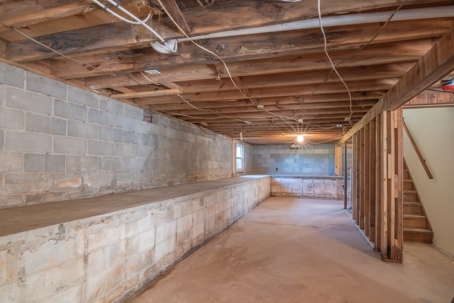One of the most common questions disaster cleanup services get is, “Why did my basement flood?” Unfortunately, there’s no easy answer to that question. There are a number of different factors that can contribute to basement flooding, and it can be difficult to pinpoint the exact cause of the problem.
In this blog post, we’ll take a look at some of the most common causes of basement flooding and what you can do to prevent it from happening to your home.
1. Heavy Rainfall
When the rain is coming down hard and fast, it can overwhelm your home’s drainage system and cause water to back up into your basement. This is especially true if your home is located on a slope, as the water will have a natural tendency to flow downhill.
If you live in an area prone to heavy rainstorms, it’s important to ensure that your home’s drainage system is up to handle the increased water flow.
2. Broken or Clogged Sewer Line
If the sewer line that runs from your home to the city sewer system becomes blocked, it can cause sewage to back up into your basement. This serious problem should be addressed immediately, as it can lead to serious health hazards.
If you suspect that your sewer line is blocked, you should contact a professional plumber to have it inspected and repaired.
3. Broken Water Pipe
If a water pipe in your home bursts, it can cause significant water damage. This is especially true if the pipe is located in your basement, as the water will have nowhere else to go but up. If you suspect a water pipe has burst, you should immediately shut off the water to your home and call a plumber to repair it.
4. High Water Table
If the water table in your area is high, it can put pressure on your home’s foundation and cause water to seep into your basement. This is especially common in areas that experience a lot of rainfall or snowmelt.
5. Faulty Sump Pump
Sump pumps are designed to remove water from the basement, but if they are not working properly, they can actually cause flooding. Make sure to test your sump pump regularly to ensure that it is working properly. You should also have a backup sump pump in case of a power outage.
What to Do If Your Basement Is Already Flooded
1. Stop the Water
If you can, stop the water at its source. This may mean turning off the main water supply to your home.
2. Pump Out the Water
If the water is not too deep, you may be able to pump it out with a wet/dry vacuum.
3. Remove the Water
Once the water is gone, you’ll need to remove any remaining water from the basement. This can be done with a mop and bucket or a wet/dry vacuum.
4. Dry Out the Basement
Once the water is removed, you’ll need to dry out the basement. You can do this with fans and dehumidifiers.
5. Clean up the Mess
Once the basement is dry, you’ll need to clean up any damage that was done. This may include damaged belongings, wet drywall, and more.
6. Prevent Future Flooding
Once your basement is back to normal, you’ll want to take steps to prevent future flooding. This may include installing a sump pump, waterproofing the basement, and more.
Conclusion
A variety of factors, such as heavy rains, broken or clogged sewer lines, broken water pipes, high water tables, and faulty sump pumps, can cause basement flooding. There are ways you can do to prevent basement flooding, as outlined in this article.
By taking preventive measures and regularly inspecting the basement, homeowners can reduce the risk of basement flooding and protect their homes from potential water damage.
If your basement is flooded, don’t hesitate to reach out to a professional water damage company in Marco Island. DryZone will be able to help you assess the situation, identify the cause of the flooding, and take the necessary steps to restore your basement to its pre-flood state. Don’t let a flooded basement ruin your home – take action by reaching out to us today!


